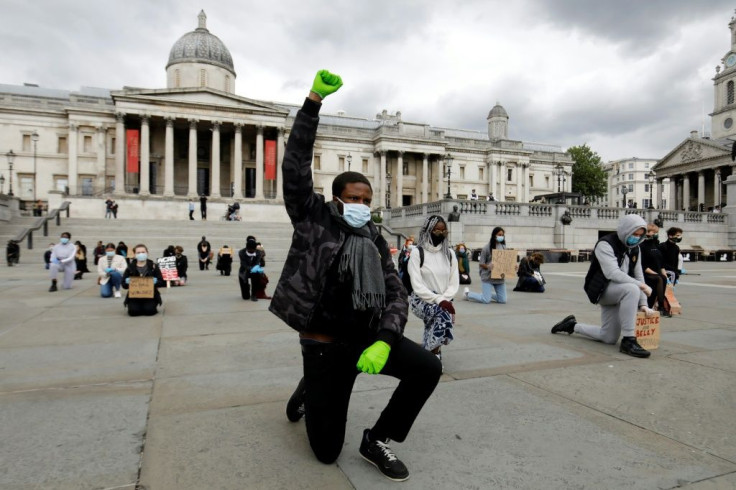Racism In The US: Why Pollution, Poverty, Poor Health And The Police Can No Longer Be Ignored

KEY POINTS
- In a convergence of ongoing catastrophes, those living in North Minneapolis lack access to reliable medical care, good quality food, cleaner air and water and safer jobs.
- While blacks constitute about a third of the population of Chicago, they comprise two-thirds of all deaths in the densely populated, heavily polluted South Side neighborhoods.
- We have a chance to begin to get rid of the virus of racism running throughout our streets and lives.
“I can’t breathe.” Those dying words from George Floyd as he lay handcuffed and prone under the boots of a Minneapolis police officer have become a rallying call across the nation.
Other residents in Floyd’s region also have problems breathing every day. In a convergence of ongoing catastrophes, those living in North Minneapolis lack access to reliable medical care, good quality food, cleaner air and water and safer jobs. They also have the highest chances of dying from diabetes, asthma, hypertension and COVID-19.
In the early part of the 20th century, Minneapolis took the same strategy with blacks that England took with the Jews during the Renaissance by barring them from entry altogether. One covenant from 1923 promoting sales for the Nokomis development in the city’s now exclusive south shore said: “Premises shall not be sold, mortgaged, or leased to or occupied by any person or persons other than members of the Caucasian race.” More than 20,000 such deed restrictions by race have been unearthed by urban historians for this city alone.
Four centuries of slavery and more recent policies of redlining that brought Jim Crow well into the North leave us with a deeply troubling legacy. While video captured this sickening display of racial injustice to Floyd, no video chronicles the thousands that lose their lives every year just because they live near metal recycling plants, antiquated industrial mills or other dangerous sources of pollution. Wired reported recently that the upper midwest has been especially inhospitable: ultra-fine particulate air pollution shortens the lives of 2,000 each year in the Minneapolis region.
Each death is a loss. Each its own tragedy. But, when looked at together, these deaths leave patterns that tell important stories. Northwestern University cardiologist, Clyde W. Yancy, has recently detailed the disproportionate suffering of Black Americans throughout our nation. Writing in the Journal of the American Medical Association, he determined that while blacks constitute about a third of the population of Chicago, they comprise two-thirds of all deaths in the densely populated, heavily polluted South Side neighborhoods. Similar patterns are evident in Michigan and Louisiana, where more than twice as many blacks die of the virus as occur in the overall population.
As Yancy declared, “A 6-fold increase in the rate of death for African Americans due to a now-ubiquitous virus should be deemed unconscionable.”
All this dirty air clogs lungs and the respiratory system and contributes to heart disease and diabetes as well. Basically, tiny pollutants 50 times smaller than a human hair can enter the lung and sometimes get into the bloodstream, compromising the capacity of the nose and lung lose to slough off inhaled bacteria and viruses.
Air pollution is not the only inequitable risk confronting the black community, as Yancy reveals. Physicians are trained to treat individuals and to treat comorbidities like obesity, diabetes, and hypertension as stemming entirely from lack of self-control. They do not. Failures of our society to provide opportunities for a healthy environment at home and at work for those living on Chicago’s South Side provide a glaring indictment of our society and are indeed, as Yancy says, “unconscionable.”
Prevention is always cheaper in the long run. This biological virus is coming back. But we have a chance, actually an obligation, to begin to get rid of the virus of racism running throughout our streets and lives.
Of course, we need to focus on individual risk factors that heighten the chance the disease will arise and be better prepared for the demand for critical care. But, if we ignore the racial disparities in the environment that coddle and cultivate these risks, we are only worsening the chances the next waves will be even worse. Do we want to pay later with enormous loss of life and livelihoods, or should we invest now to promote a healthier general environment so that we will have to pay less in the future?
We cannot expect to immediately address and resolve the years of inequity that have brought us to this haunting reality. But, we can begin by asserting that racial differences in health are not acceptable for a civil society that is founded on principles of equality and fairness.
Dr. Devra Davis has advised the WHO, UN, IMF and served in the Clinton Administration. She was a Member of the Team of IPCC Scientists Awarded the Nobel Peace Prize in 2007. She is Founder of EHTrust.org
© Copyright IBTimes 2025. All rights reserved.





















